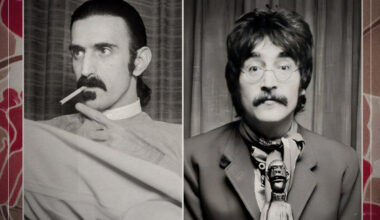In the 30 years that separated The Beatles and Nirvana, music fans’ attitudes had changed drastically. The Fab Four started off as screaming teenagers who, as they grew through the decade with them, turned into free-thinking bohemians who basked in the psychedelia of their music.
For the most part, The Beatles represented a chirpier time for music, painting the world with kaleidoscopic colour. By the time Nirvana came around in the 1990s, the backwash of politics that stemmed from the 1960s had turned into something more sour in America, creating a sea of disillusioned youngsters.
They no longer had an all-encompassing movement of love to buy into, nor was there an alternative for them to embrace either. They were stuck in limbo between rapid commercialisation and a crippling economic recession. In rebellion against society’s move to a more homogeneous place of glamour, grunge broke through the cracks.
On the surface, it seemed wildly different from the seemingly sunny disposition of ‘60s psychedelia, but such was the genius of The Beatles that their influence could be found in most things. And while you may not have thought it, it was certainly found in the caustic grunge of Kurt Cobain and Nirvana.
While he plugged in and ramped up the distortion to ten, the foundations upon which he built his anti-establishment musings were very much built on the works of The Beatles. Verse and chorus structures were taken from the Fab Four, as well as the use of harmonies, which, in Nirvana’s case, were used to haunt their grunge aesthetic.
“When I was young, that’s how I learned how to play music — I had a guitar and a Beatles songbook,” he recalled. “I would listen to the records and play along. Of course, it didn’t sound like The Beatles, but it got me to understand song structure and melody and harmony and arrangement.”
You could quite feasibly see how John Lennon, in particular, would serve as a muse for Cobain. Both shared a relatively warped outlook on life and fed that into their songwriting. It was a sense of darkness that grew with their rising profiles, and for Cobain, the obvious isolation he would have experienced in his final years would have been undoubtedly comforted by the work of Lennon.
But while you may expect his love of The Beatles to have come from the band’s later, more experimental work, you would be mistaken. No, Cobain’s love for the band stemmed from their first US release, Meet the Beatles!
The album that introduced the world to their charming brand of pop-rock seemingly infected the bones of Cobain, who reportedly played the entire record on repeat for a whole day. What’s more was that when he was finished soaking himself in the upbeat sounds of the early Beatles, he felt compelled to pick up his own guitar and write his own version. What followed was a Nirvana classic in ‘About A Girl’. Now, I urge you to listen to the iconic track from Bleach and notice the obvious but surprising parallels between ‘60s blues-rock and ‘90s grunge.






